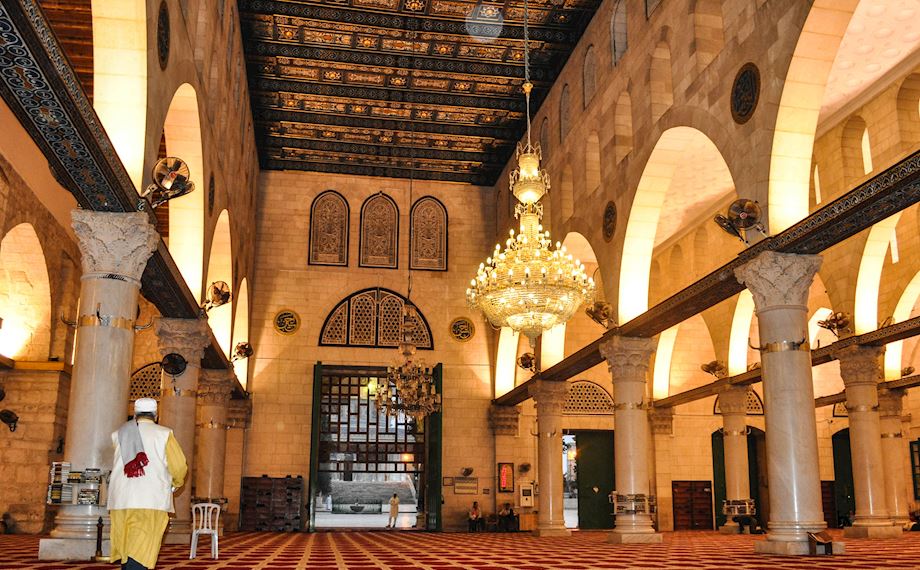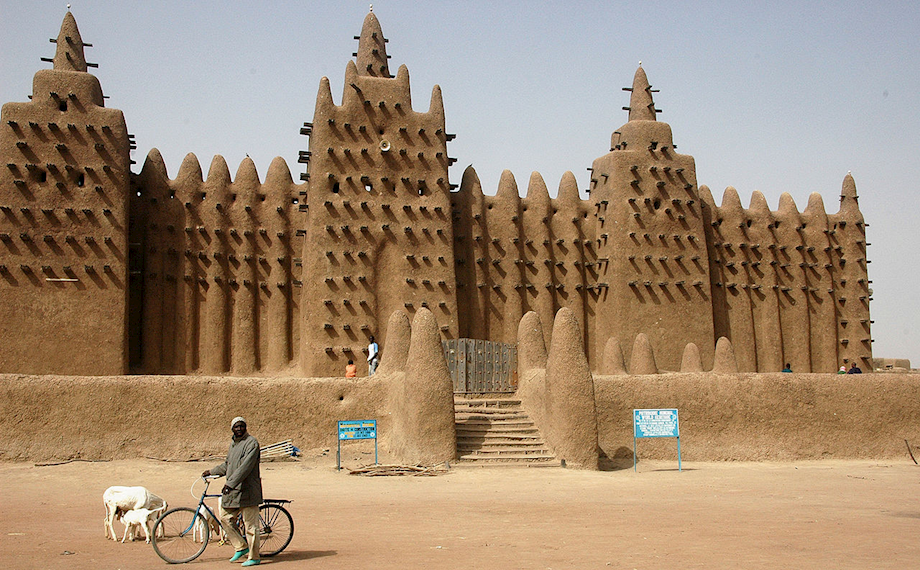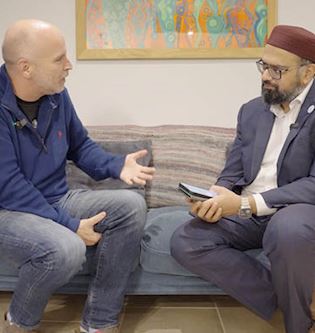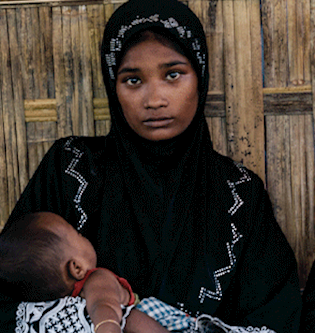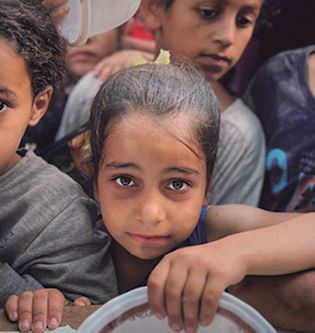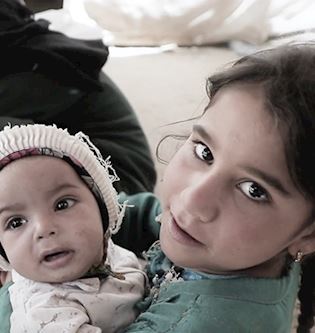How to Perform Salah

Salah is the second of five pillars of Islam. Performing Salah five times daily is compulsory for all Muslims past puberty, which is the age of legal responsibility. It gives us an opportunity to communicate with Allah (swt), remember Him, show our gratitude to Him, with the act of prostration being the moment we are closest to Him. Salah is a gift for every believer and it is the first thing we are accounted for on the Day of Judgement.
We’ve put together this brief guide as an easy way for beginners to learn how its performed, or for anyone who wants to refresh their knowledge. All of the rulings here are according to the Hanafi school of Islamic jurisprudence.
Why not support worshippers at Blessed Masjid Al-Aqsa and share in the reward of their ibadah as well as your own?
Salah is to be performed during five set times during each day and night. You can easily find the correct Salah times for your location by using an app or website.
- When it’s time for Salah, ensure you have wudu and you are wearing clothing that, at a minimum, covers your awrah. The awrah for men is to cover everything from and including the navel to the knees. Women must cover everything except the hands, feet and face.
- Find a clean space (like on a prayer mat) and somewhere that won’t cause inconvenience for others.
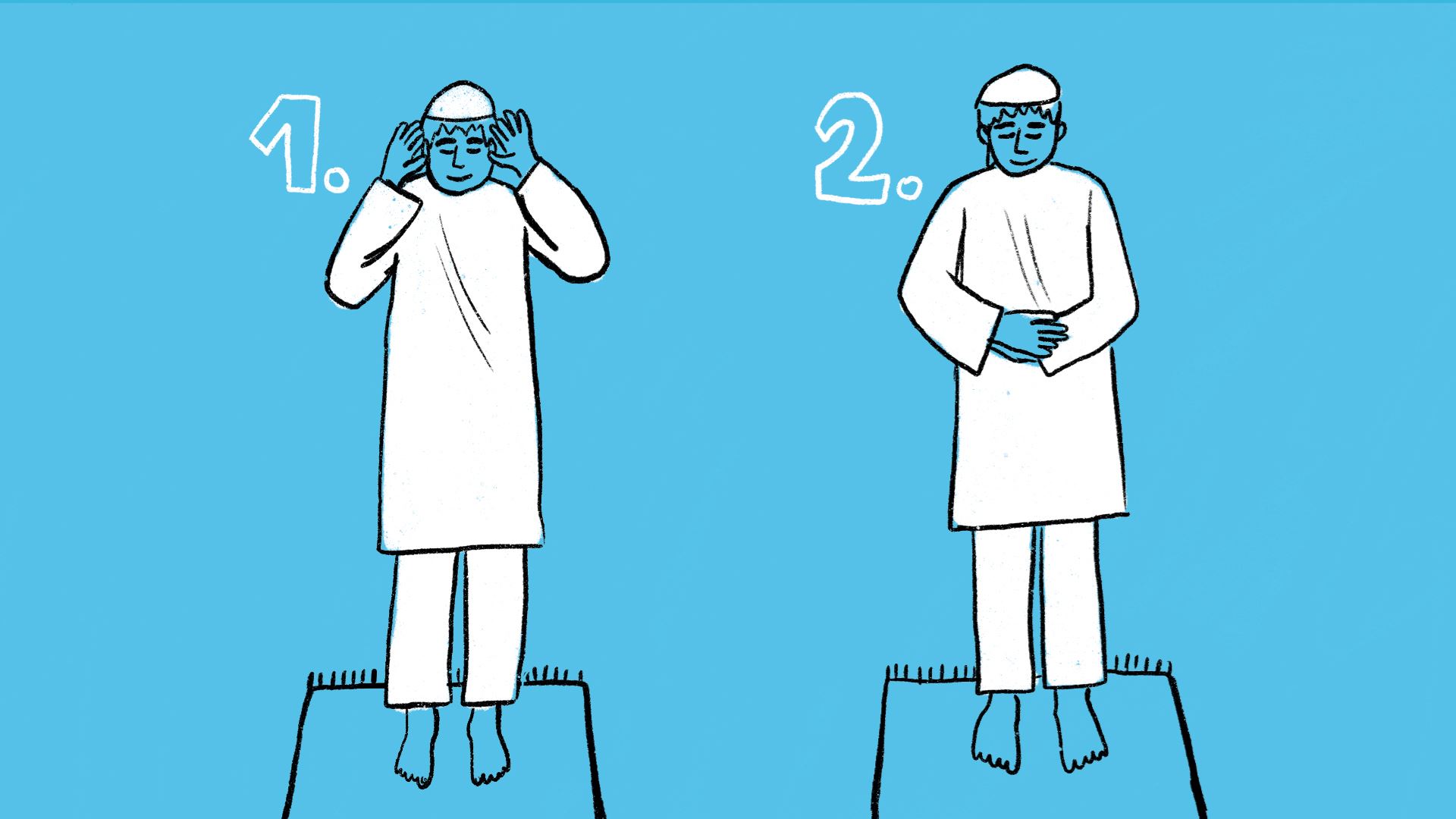
- Stand and face the Qiblah (direction towards the Ka‘bah in Makkah), which in the UK is towards the south-east. There are many free apps which will tell you where the Qiblah is, using the compass on your phone. If you are unable to stand due to illness or infirmity, you can pray sitting down.
- Begin by making your intention for the Salah, verbally or silently. This is done in either Arabic or your own language. Say, ‘I intend to pray the (four) Rak‘at of Salatul (Dhuhr) for Allah facing the Ka‘bah’, replacing the parts in brackets with the correct number of Rak‘ats (units of prayer) and the Salah you are about to perform.
- From making this intention until the end of your Salah, focus completely on Allah and praying to Him.
- Raise your hands up to your earlobes for men, and shoulders for women, whilst saying ‘Allahu Akbar’. This means ‘Allah is the Greatest’. You are now in a state of Ihram, which means that all worldly things are forbidden for you, such as talking, laughing, eating, drinking or thinking about anything that will distract you.
- Place your right hand over your left, just below the naval. Women should place their hands over their chest.
- Say quietly,‘SubhanaK-Allahumma wa bihamdiKa, wa tabaarak-asmuKa, wa ta-‘aala jadduKa, wa la ilaaha ghayruK’. This means ‘O Allah, glory and praise are for You, and blessed is Your Name, and exalted is Your Majesty and there is no god but You’.
- Then recite quietly, ‘Auudhu bi-Llahi min ash-Shaytanir rajeem bismi-Llahir Rahmaani Raheem’. This means, ‘I seek protection in Allah from the rejected Satan. In the name of Allah, the Most Gracious, the Most Merciful’.
- Then recite Surah al-Fatihah, ending by saying silently ‘Ameen’, meaning ‘let it be so’.
- Then recite any other Surah. The minimum recitation is three verses, or one long verse which is equal in length to three short verses. However, it is better to recite a complete Surah.
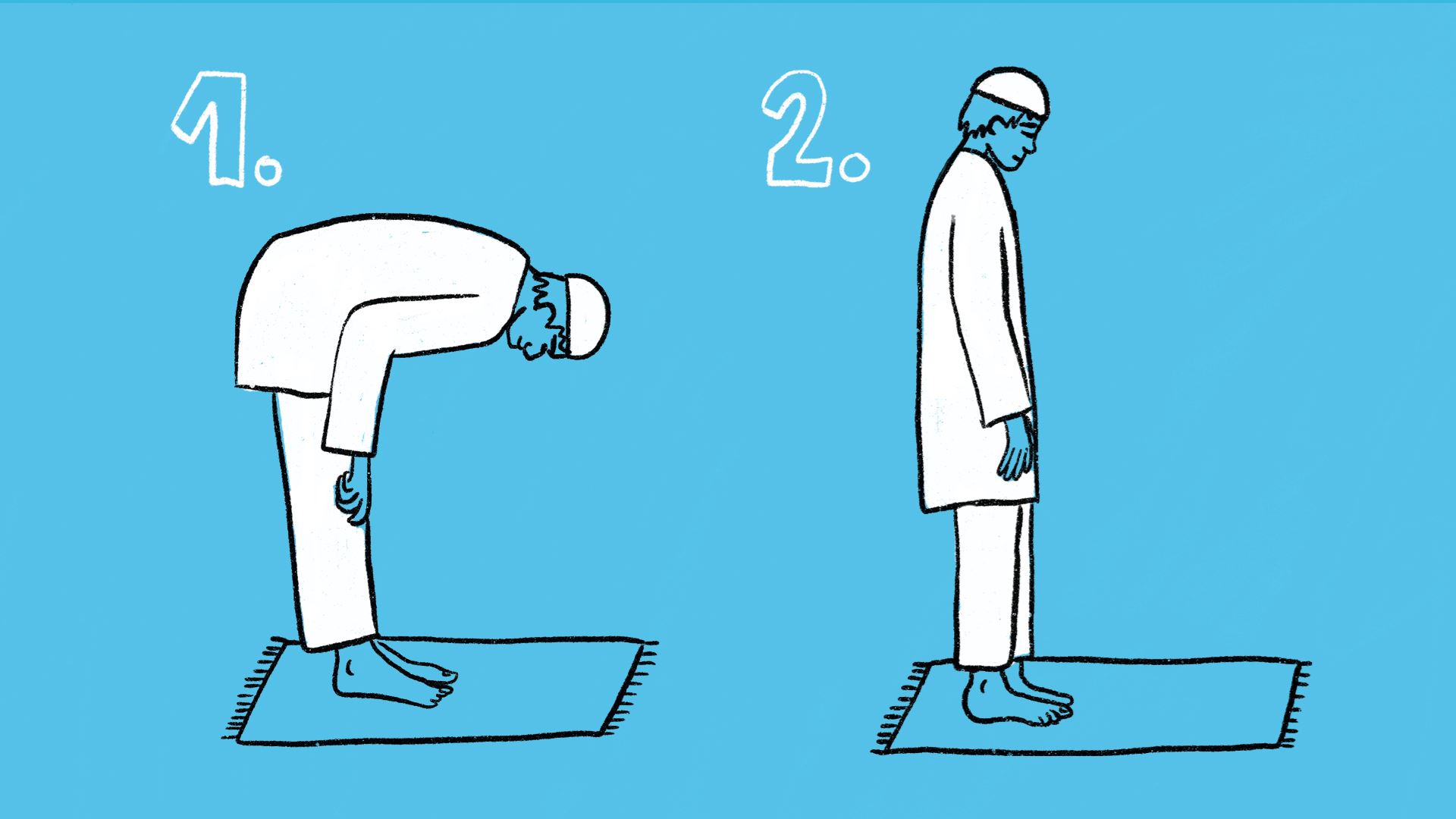
- Bow down and say ‘Allahu Akbar’ meaning ‘Allah is the Greatest’, placing your hands on your knees, with your back straight. Rest at this position, called Ruku (bowing), and say ‘Subhana Rabbiy-al-‘Adheem’ three times at least. This means ‘Glory be to my Lord, the Great’.
- Then as you stand up fully straight again say, ‘Sami‘-Allahu liman hamidaH’ - ‘Allah heard the one who praised Him’. Then say, ‘Rabbana laKal hamd’ - ‘O our Lord, all praise belongs to You’.

- Again say ‘Allahu Akbar’ and go down into prostration, which is called Sujud. When prostrating, your forehead, nose, palms of both hands, knees and toes pointing forward should all be touching the floor.
- Say at least three times, ‘Subhaana Rabbiy-al-A‘laa’ - ‘Glory be to my Lord, the Highest’.
- Sit up whilst saying ‘Allahu Akbar’. Rest the palms of your hands on your knees. Sit on the flat of your left foot, whilst keeping the toes of the right foot planted and pointing forward. Women should lean on their left hip pointing the toes of both feet to the right side.
- After a few moments, return back into prostration whilst saying ‘Allahu Akbar’ and repeat step 15.
- Stand up completely whilst saying ‘Allahu Akbar’. You have now completed your first unit, or Rak‘ah, of Salah!
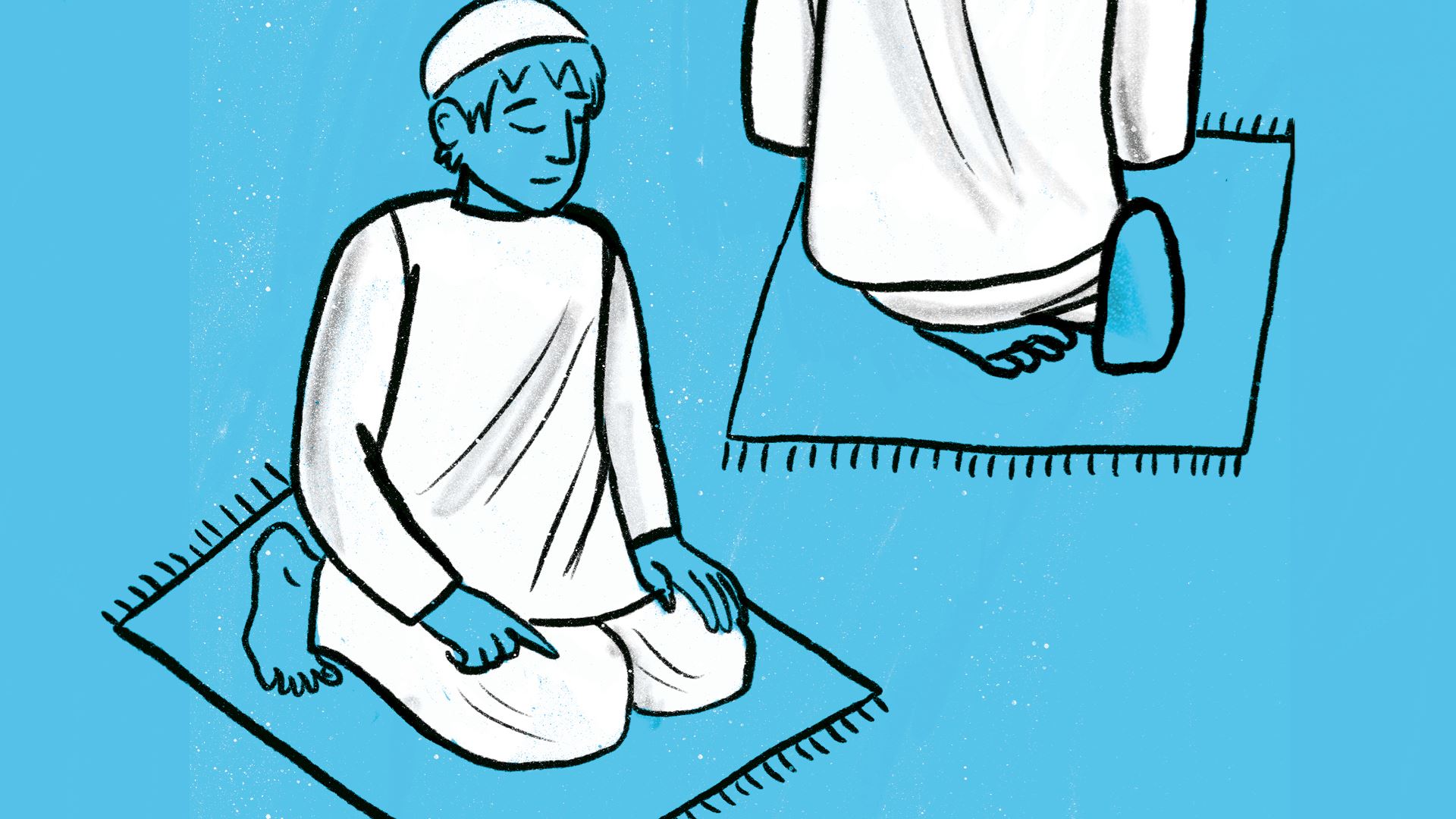
- Follow steps 10 to 17 again.
- Then return to a sitting position as described in step 16.
- While sitting, recite the first part of the Tashahud, ‘At-tahiyyatu lillah, was-salawaatu wat-tayyibaat. As-salaamu ‘alayka ayyuhan-Nabiyyu wa rahmat-Ullahi wa barakaatu. As-salaamu ‘alayna, wa ‘alaa ‘ibaadi-llahis saaliheen'. This means, ‘All compliments are for Allah, and prayers and goodness. Peace be upon you, O Prophet, and the mercy of Allah and His blessings. Peace be upon us and on the righteous servants of Allah'.
- Then, keeping your hands resting on your knees, raise your right index finger while clasping the other fingers of your right hand. Now, recite the second part of the Tashahud, 'Ashhadu an laa ilaaha ill-Allahu wa ashhadu anna Muhammadan ‘abduHu wa Rasooluh’. This means, 'I bear witness that there is no god but Allah and I bear witness that Muhammad is His servant and messenger’.
- Lower your right index finger, so both your palms are resting on your knees again.
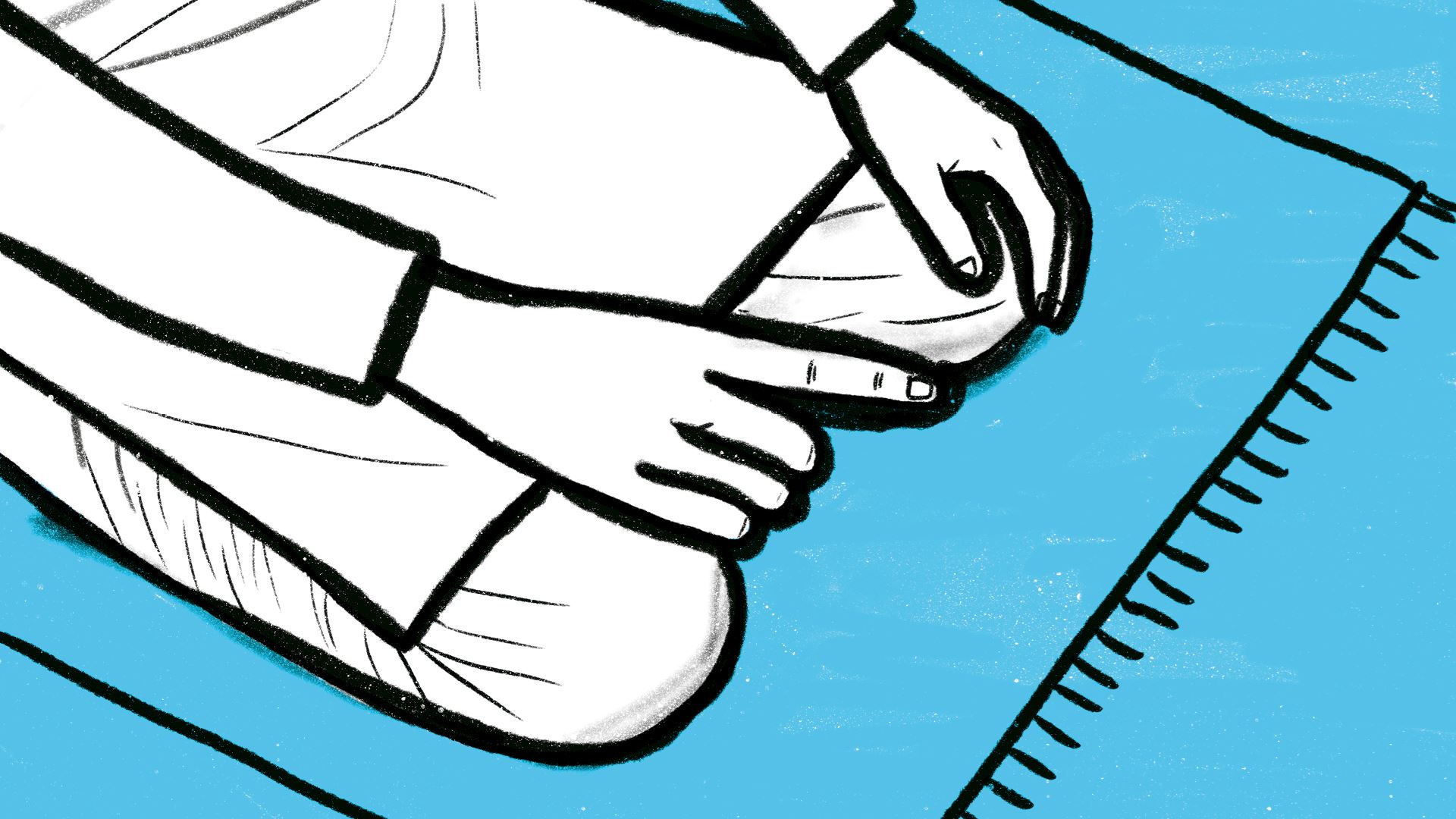
- If you are praying the two Rak‘ats of the Fajr prayer, please follow steps 25 to 28. If not, please skip to step 29.
- Continue sitting down and recite, ‘Allahumma salli ‘alaa Muhammadiw wa ‘alaa aali Muhammadin, kamaa sallayta ‘alaa Ibraheema wa ‘alaa aali Ibraheema, innaKa Hameedum Majeed. Allahumma baarik ‘alaa Muhammadiw wa ‘alaa aali Muhammadin, kamaa baarakta ‘alaa Ibraheema wa ‘alaa aali Ibraheema, innaKa Hameedum Majeed'. This means, ‘O Allah, send Your mercy upon Muhammad and the family of Muhammad, just as You sent mercy upon Ibrahim and the family of Ibrahim. Truly You are Praiseworthy and Glorious. O Allah, send blessings upon Muhammad and the family of Muhammad, just as You sent blessings upon Ibrahim and the family of Ibrahim. Truly You are Praiseworthy and Glorious’.
- It is then highly recommended to recite some supplications (du‘a). One very simple and comprehensive one is, ‘Rabbana aatina fid-dunya hasanataw wa fil-aakhirati hasantaw wa qina ‘adhaaban Naar’. This means, ‘O our Lord give us good in this world and good in the hereafter and protect us from the punishment of the Fire.’
- You then complete the Salah by turning your head first over your right shoulder, saying ‘As-salamu ‘alaykum wa rahmat-Ullahi wa barakaatuH’. Then repeat these words while turning your head over your left shoulder. They mean, 'May peace, the mercy of Allah and His blessings be upon you'.
- If you were praying Fajr, your Salah is now completed!

- If you are praying Dhuhr, ‘Asr, Maghrib or ‘Isha, do not perform steps 25 to 28. Instead, you must repeat step 10 - reciting Surah al-Fatihah while standing.
- Now follow steps 12 to 17.
- If you are praying the three Rak‘ah of Maghrib, you must now repeat steps 20 to 23. Then repeat steps 25 to 27. Your Maghrib prayer is now completed!
- HOWEVER, if you are praying the four Rak‘ah of Dhuhr, ‘Asr or ‘Isha, please ignore step 31! Instead, repeat steps 29 and 30 again.
- Now follow steps 20 to 23. Then follow steps 25 to 27.
- Your Dhuhr, ‘Asr or ‘Isha Salah is now completed! Alhamdulillah, all praise be to Allah!

- Note: All of Fajr must be read out loud for men praying in congregation. Dhuhr and ‘Asr must be made in complete silence and under your breath. The first two Rak‘ahs of Maghrib and ‘Isha should be read out loud, the remaining are to be read in silence.
Muslim Hands is an award-winning charity, established in 1993 to help those needing emergency relief and tackling the root causes of poverty.






